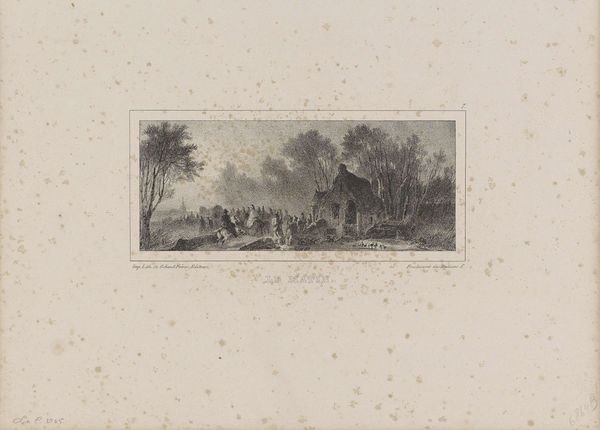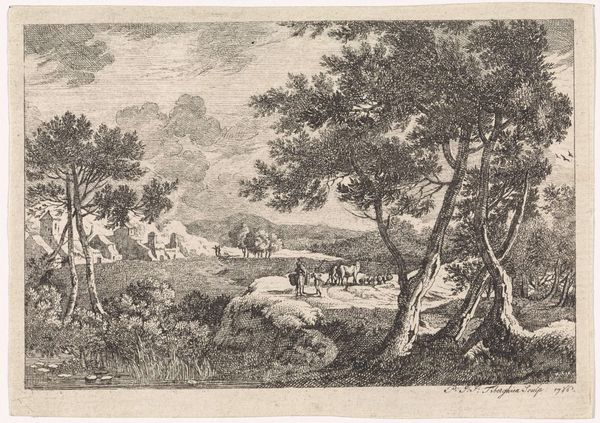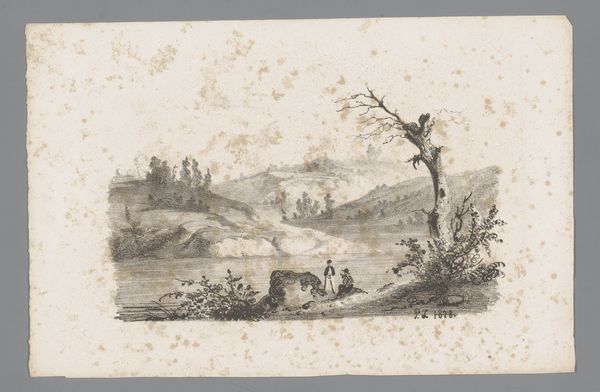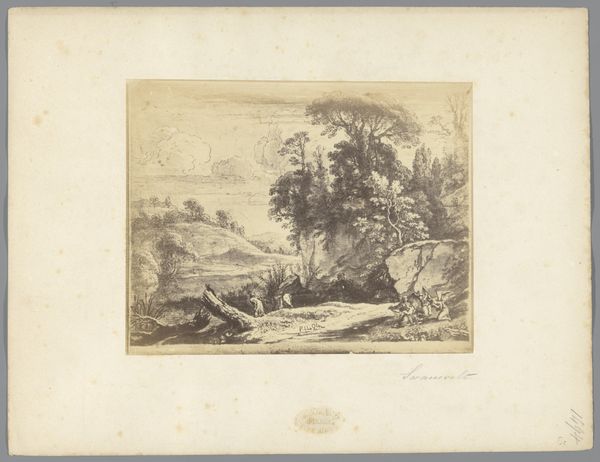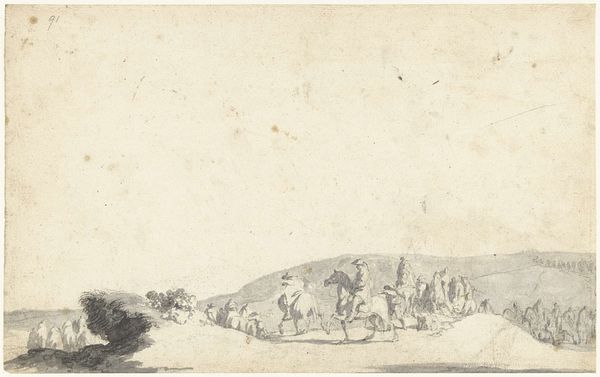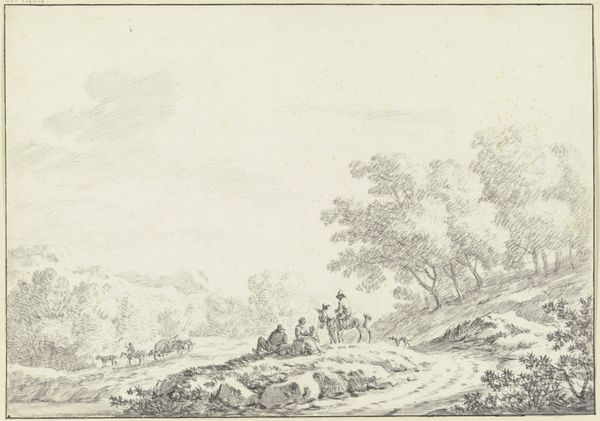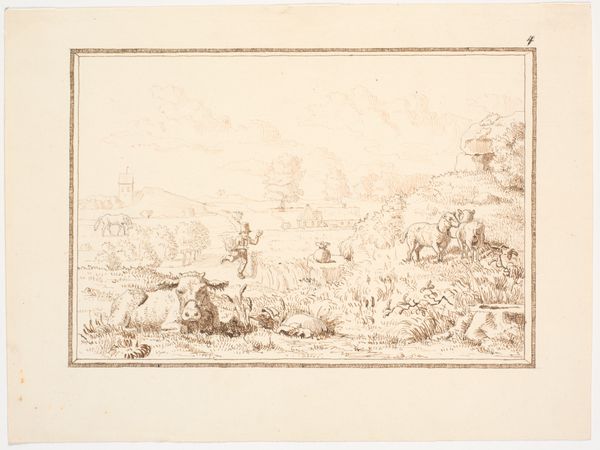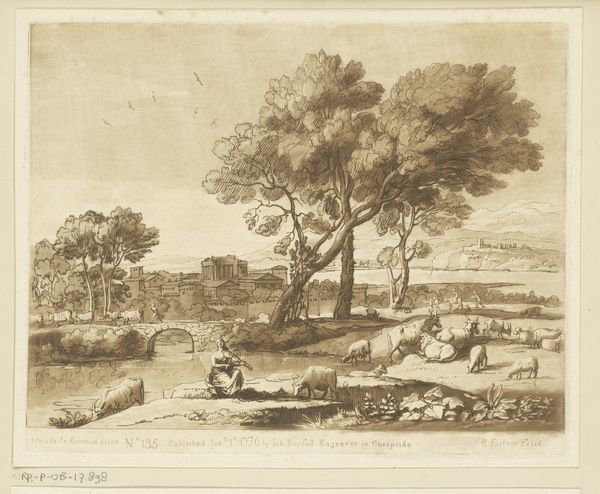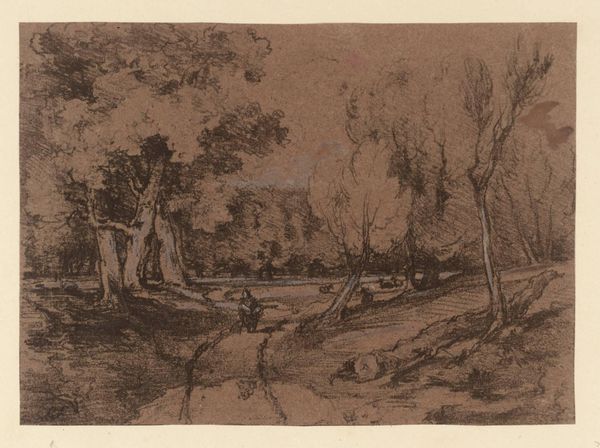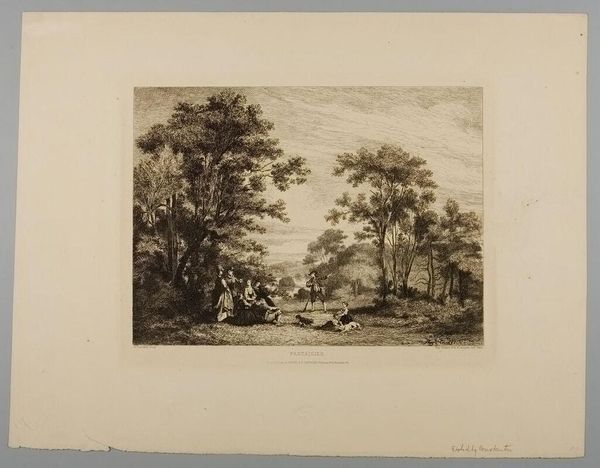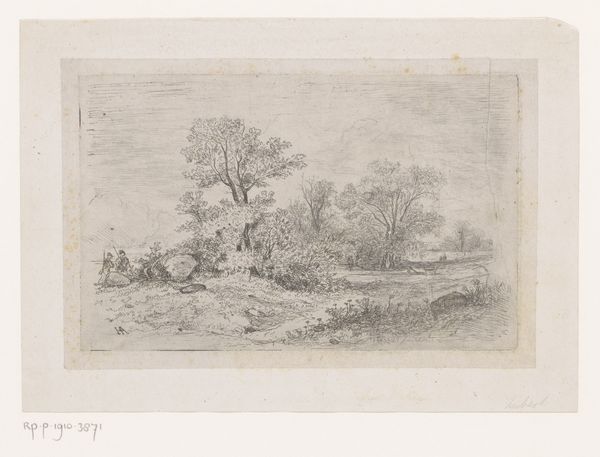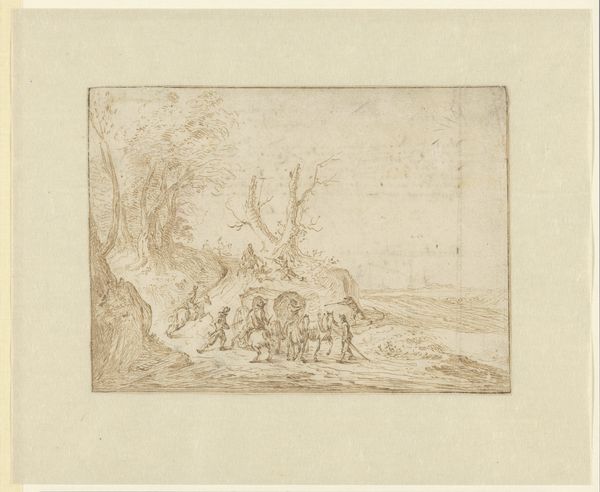
Dimensions: height 340 mm, width 240 mm
Copyright: Rijks Museum: Open Domain
Curator: This work is called "Schouw met spiegel en panelen." It’s attributed to Carl Albert von Lespilliez, and dates roughly from 1733 to 1768. It's a genre-painting rendered in watercolor and colored pencil. Editor: There's an immediate intimacy to this scene; a casual, everyday feeling pervades despite its formal style. It reminds me of old book illustrations depicting a pastoral idyll. What do you make of the technique? Curator: Well, the interplay between watercolor and coloured pencil suggests an interesting duality in the creative process. The watercolor provides a wash of colour, a base upon which the narrative unfolds, while the colored pencil is employed to pick out detail and depth. This gives insight to the artist’s careful and studied craft. The artist is controlling light and shadow within an arcadian setting. Editor: It makes me think about accessibility. Watercolors, colored pencils… such commonplace materials. Almost anyone can get their hands on these, and conjure their own worlds like this. It speaks to the possibility of art making as a widespread practice rather than a hallowed undertaking. Curator: Exactly. Though don't mistake accessibility for a lack of complexity. Lespilliez, while seemingly capturing a simple moment, would also be engaging with ideas about social order. This could reflect contemporary perceptions of rural life. The arrangement of figures— the shepherd with his dog, leisurely enjoying the landscape— speak to a well ordered society. Editor: Absolutely. Perhaps even an idealized one. Everything feels meticulously placed, everyone looks relaxed, as if existing only in a perfectly picturesque bubble. I am quite captivated by this sense of ordered tranquility. It gives a lot to unpack as to its possible intentions. Curator: That's a crucial point: what is presented and who gets to control that presentation? Considering the social structures inherent within 18th-century art production, we're provided insights into a visual narrative of a very particular world. It reveals more than it conceals. Editor: And reveals so much about who *we* are now, analyzing these layers centuries later! I’ll leave with this renewed curiosity towards simple scenes and how loaded they might really be! Curator: Indeed, an excellent summation, demonstrating the ever-lasting discourse between viewer and artwork.
Comments
No comments
Be the first to comment and join the conversation on the ultimate creative platform.
